BROWN WIDOW
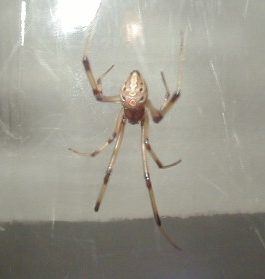
Brown Widow
© 2002 David W. George
Scientific name
Latrodectus geometricus
Size
The average size of mature, female Brown Widow spiders is approximately .5 inch, with a leg span of 1.5 to 2 inches. Mature, male Brown Widow spiders are much smaller - approximately 1/3 the size of the female.
Description
Brown Widow spiders are typically tan to medium brown in color. In some instances, they can be significantly lighter, almost cream colored, while in others they can be much darker brown, almost appearing black. They have the typical widow hourglass marking on the underside of their abdomen, and most of the time this hourglass appears to be orange, sometimes yellow, on the Brown Widow instead of the red color typically found on the related black widow species. The top of Brown Widow's abdomen can vary greatly in the way it is marked. Typically it has red or white spots running down the middle of its back. Sometimes it will also have black and white markings patterned down the sides of the abdomen. The legs of the Brown Widow are typically banded with yellow/brown and black, as can be seen in the photos below, although I have found that this banding is very hard to see unless the spider is in bright lighting. When not in bright lighting, the legs appear dark brown or black.
Distribution
The Brown Widow is an introduced species in the United States, and was once only found in central and
southern Florida. It has since rapidly expanded it's territory and is now found in every southern state in the
United States. Outside of the United States, it is believed to live in most tropical areas of
the world.
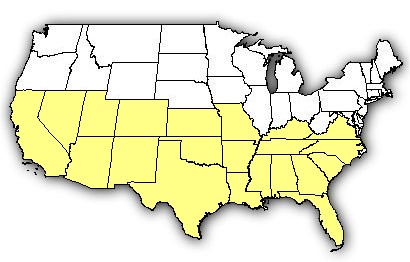
Map does not show area of true distribution, only the states in which there is a population.
Actual distribution in any highlighted state may be limited.
Notes
As with all widow spiders, only the female of the species is considered dangerous. The much smaller male is considered harmless. Brown Widow spiders are nocturnal, which means they are active during the nighttime. They spend most of their time hanging "upside down" in their web, which often makes the hourglass marking immediately visible. Brown Widow spiders are very common around residential areas and often build webs on outdoor patios, patio furniture, outdoor grills, sheds, undersides of decks, and in garages.
Brown Widow spiders are typically not aggressive, and bite as a defensive measure when they are attacked or feel threatened. They will often retreat into hiding, but are more protective of their web when there are egg sacs present.
Additional notes on the web and egg sacs of Brown Widow spiders accompany the photos below.
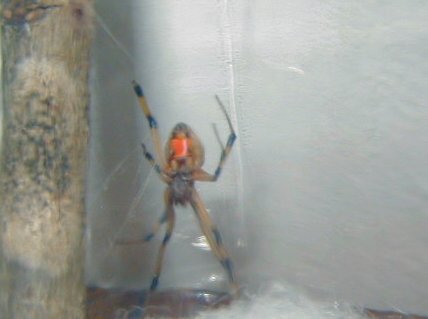
Brown Widow Underneath
© 2002 David W. George
Web
The web of the Brown Widow does not resemble the typical spider's web, such as the garden spider's web, that is often associated with spiders. It instead resembles a cobweb, constructed of very strong white silk. The web will often be constructed under rocks or logs, in sheds, barns, or in large cracks and crevices, where it will be dark and the web will be protected from the weather. The Brown Widow, being common around residential areas, will also build it's web under outdoor patio furniture, grills, pottery, and other stationary items that could provide shelter.
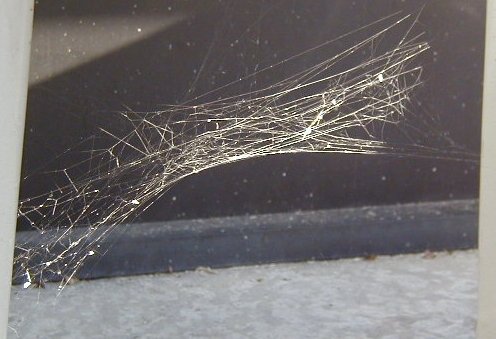
A Widow's Web
© 2002 David W. George
Egg sacs
The egg sac of the Brown Widow is very unique and is an excellent identifying feature. As seen in the photos below, the egg sacs are a creamy-tan color. What makes them unique is the many "spikes" that appear on the egg sac.
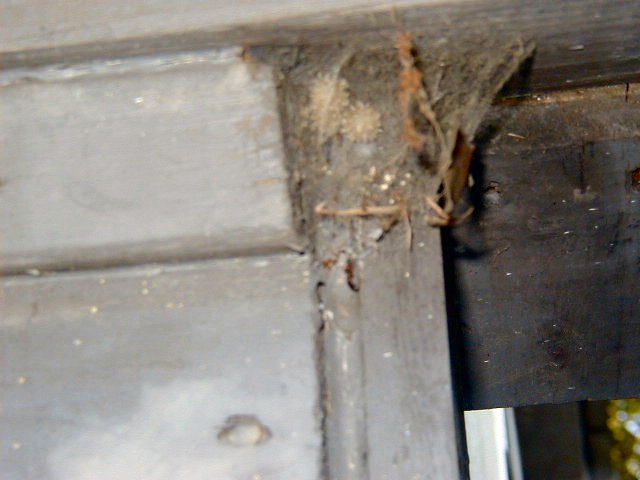
Brown Widow egg sacs under eaves of wooden shed
© 2002 David W. George
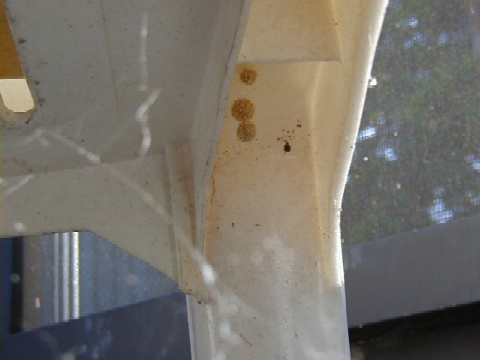
Brown Widow egg sacs in patio furniture
© 2002 David W. George
For more information on dangerously venomous spiders, please see the Venomous Links page.
Terms and Conditions | Privacy Policy
Change your Cookies Preferences
